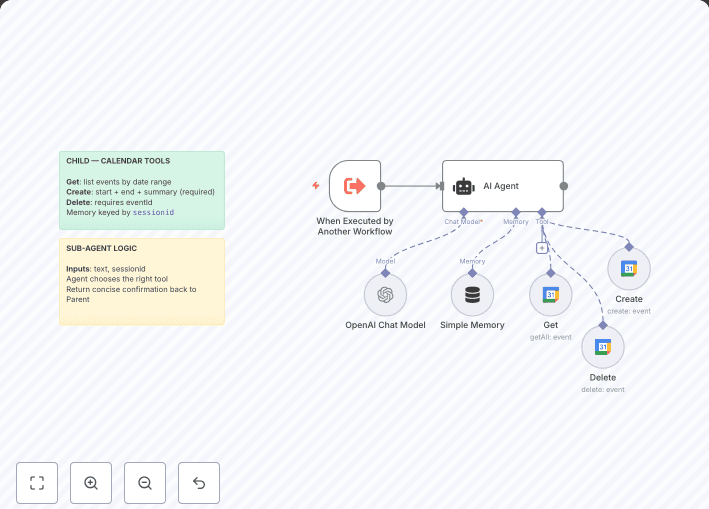This workflow is designed to intelligently route user queries to the most suitable large language model (LLM) based on the type of request received in a chat environment. It uses structured classification and model selection to optimize both performance and cost-efficiency in AI-driven conversations.
It dynamically routes requests to specialized AI models based on content type, optimizing response quality and efficiency.
Benefits
- Smart Model Routing : Reduces costs by using lighter models for general tasks and reserving heavier models for complex needs.
- Scalability : Easily expandable by adding more request types or LLMs.
- Maintainability : Clear logic separation between classification, model routing, and execution.
- Personalization : Can be integrated with session IDs for per-user memory, enabling personalized conversations.
- Speed Optimization : Fast models like
GPT-4.1 mini or Gemini Flash are chosen for tasks where speed is a priority.
How It Works
-
Input Handling :
- The workflow starts with the "When chat message received" node, which triggers the process when a chat message is received. The input includes the chat message (
chatInput) and a session ID (sessionId).
-
Request Classification :
- The "Request Type" node uses an OpenAI model (
gpt-4.1-mini) to classify the incoming request into one of four categories:
general: For general queries.reasoning: For reasoning-based questions.coding: For code-related requests.search: For queries requiring search tools.
- The classification is structured using the "Structured Output Parser" node, which enforces a consistent output format.
-
Model Selection :
- The "Model Selector" node routes the request to one of four AI models based on the classification:
- Opus 4 (Claude 4 Sonnet): Used for
coding requests.
- Gemini Thinking Pro : Used for
reasoning requests.
- GPT 4.1 mini : Used for
general requests.
- Perplexity : Used for
search (Google-related) requests.
-
AI Processing :
- The selected model processes the request via the "AI Agent" node, which includes intermediate steps for complex tasks.
- The "Simple Memory" node retains session context using the provided
sessionId, enabling multi-turn conversations.
-
Output :
- The final response is generated by the chosen model and returned to the user.
Set Up Steps
-
Configure Trigger :
- Ensure the "When chat message received" node is set up with the correct webhook ID to receive chat inputs.
-
Define Classification Logic :
- Adjust the prompt in the "Request Type" node to refine classification accuracy.
- Verify the output schema in the "Structured Output Parser" node matches expected categories (
general, reasoning, coding, search).
-
Connect AI Models :
- Link each model node (Opus 4, Gemini Thinking Pro, GPT 4.1 mini, Perplexity) to the "Model Selector" node.
- Ensure credentials (API keys) for each model are correctly configured in their respective nodes.
-
Set Up Memory :
- Configure the "Simple Memory" node to use the
sessionId from the input for context retention.
-
Test Workflow :
- Send test inputs to verify classification and model routing.
- Check intermediate outputs (e.g.,
request_type) to ensure correct model selection.
-
Activate Workflow :
- Toggle the workflow to "Active" in n8n after testing.
Need help customizing?
Contact me for consulting and support or add me on Linkedin.


